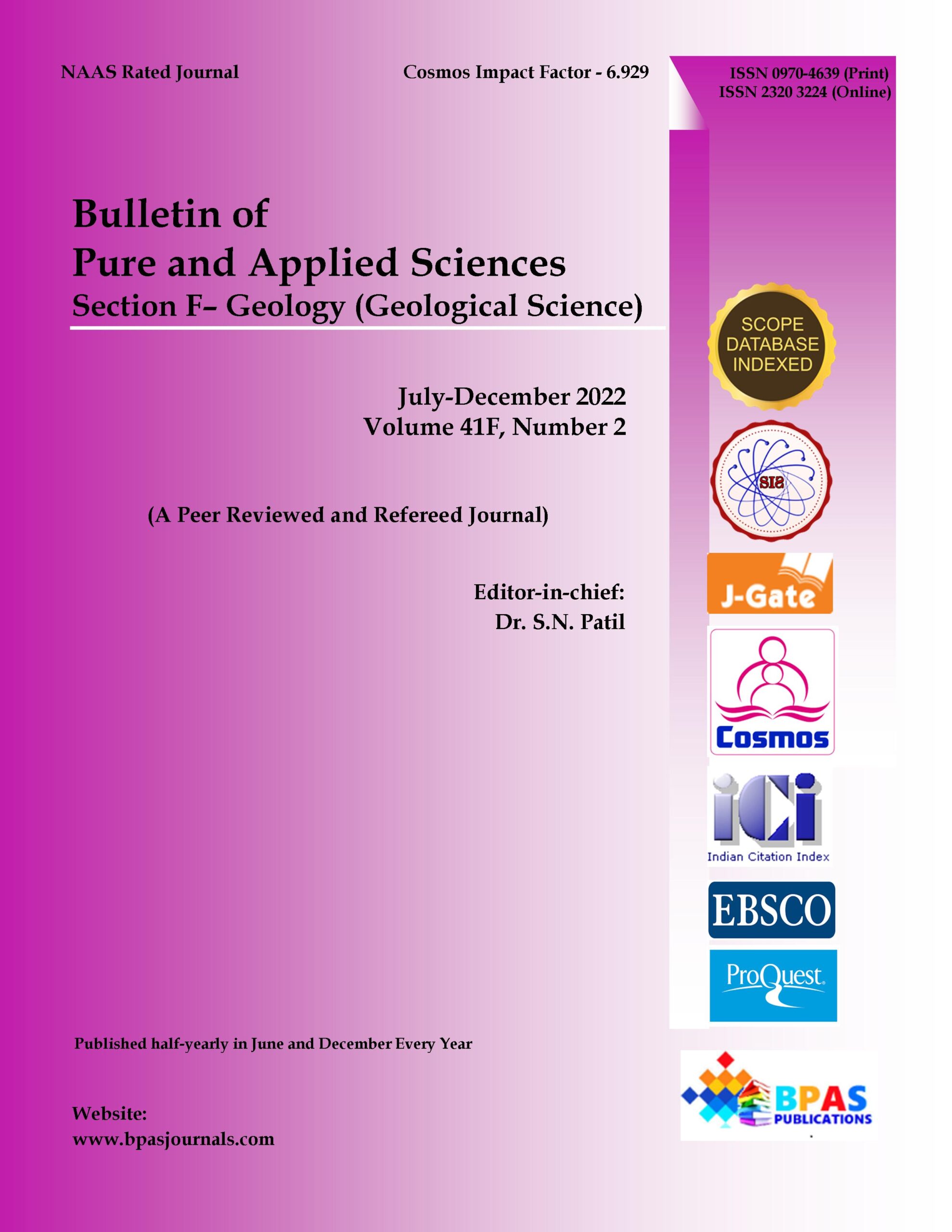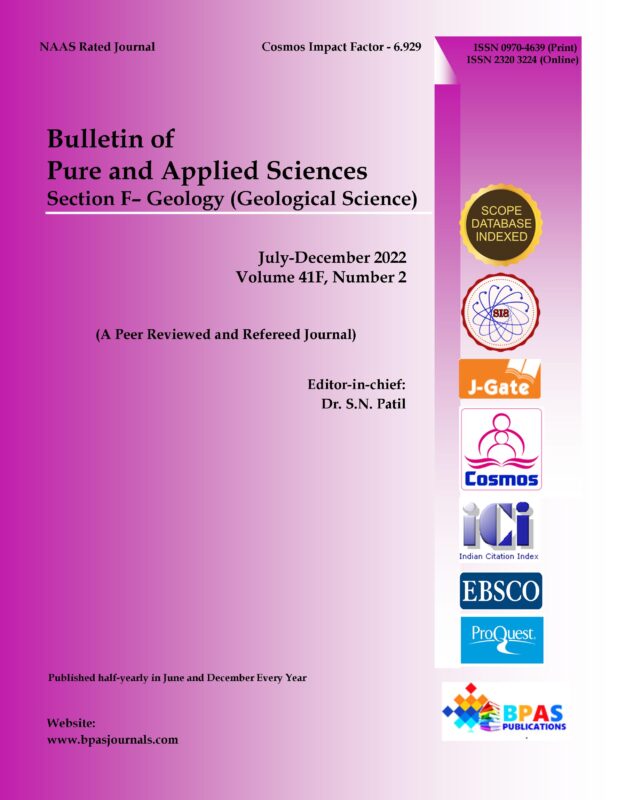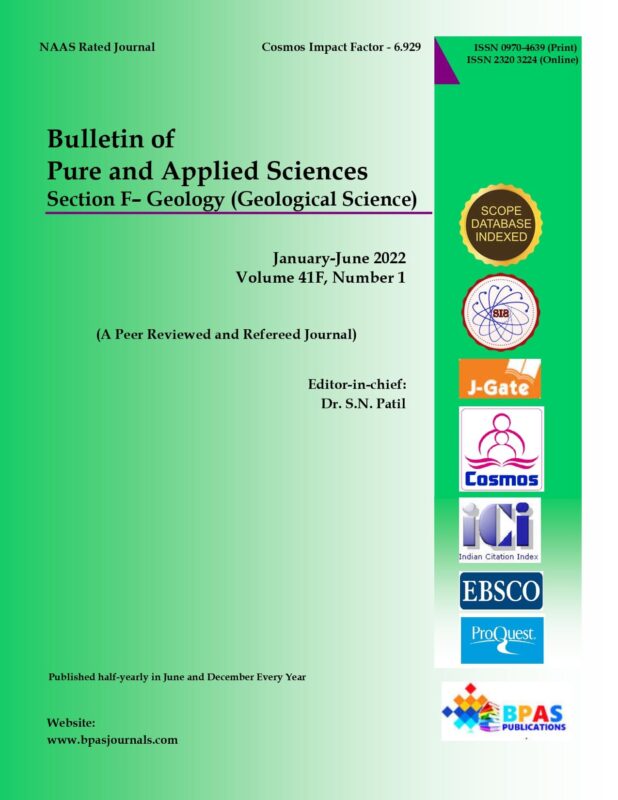Hydromorphometry of the Warana River Basin Maharashtra, India: An Insight for Irrigation Water Management in Agricultural Dominated Area
9.38$
1Suraj Kalgonda Patil*, 2Tejaswini Nikhil Bhagwat
Bulletin of Pure and Applied Sciences.
Geology (Geological Science), Vol.41F, No.2,
July-December 2022: P.182-195
DOI: 10.5958/2320-3234.2022.00016.6
Original Article
Description
Hydromorphometry of the Warana River Basin Maharashtra, India: An Insight for Irrigation Water Management in Agricultural Dominated Area
1Suraj Kalgonda Patil*, 2Tejaswini Nikhil Bhagwat
Author’s Affiliations:
1Assistant Professor, Department of Civil Engineering, DKTEs Textile and Engineering Institute, Ichalkaranji, Maharashtra 416115, India.
2Associate Professor, Department of Studies in Civil Engineering, University B.D.T. College of Engineering, Davangere, (Affiliated to Visvesvaraya Technological University, Belagavi) Karnataka 577004, India.
*Corresponding Author: Suraj Kalgonda Patil, Assistant Professor, Department of Civil Engineering, DKTEs Textile and Engineering Institute, Ichalkaranji, Maharashtra 416115, India.
E-mail: patilsuru@gmail.com
(Received on 05.05.2022, Revised on 03.07.2022, Accepted on 05.09.2022, Published on 15.12.2022)
How to cite this article: PatilS. K., Bhagwat T.N. (2022). Hydromorphometry of the Warana River Basin Maharashtra, India: An Insight for Irrigation Water Management in Agricultural Dominated Area. Bulletin of Pure and Applied Sciences- Geology, 41F (2), 182-195.



